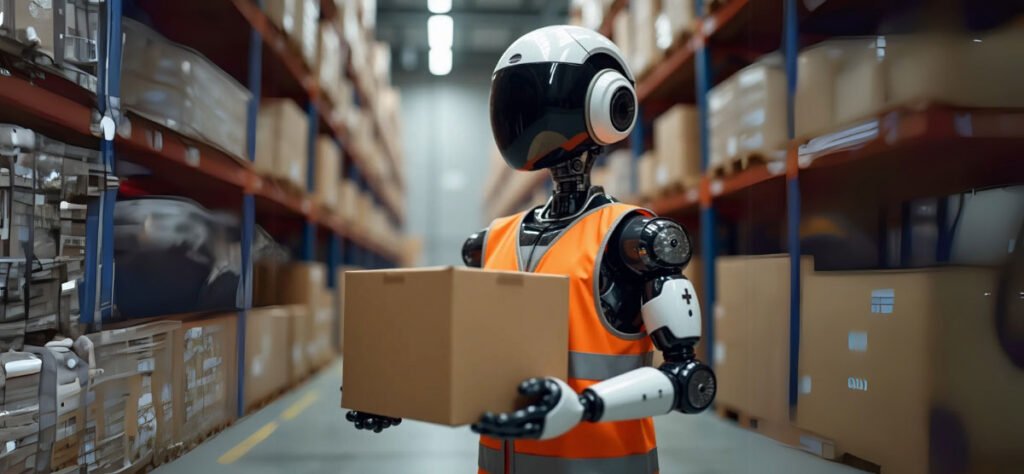In the fast-paced world of warehouse and logistics management, businesses are constantly under pressure to improve efficiency, reduce costs, and meet growing customer expectations. One of the most important decisions warehouse managers face today is whether to continue with manual warehouse operations or invest in automated warehousing systems.
This article will walk you through a detailed comparison between automated vs manual warehousing, using real-world examples and highlighting critical factors like cost, labor, scalability, and return on investment (ROI). If you’re planning a warehouse upgrade or setting up a new distribution center, this guide will help you decide what’s right for your business.
🔧 What is Manual Warehousing?
Manual warehousing refers to traditional storage and fulfilment systems where most tasks such as picking, packing, sorting, and inventory management are carried out by human labour, often using basic tools like forklifts, handheld scanners, and spreadsheets.

✔️ Pros of Manual Warehousing
Lower Initial Investment: No need for expensive robotics or infrastructure.
Flexibility: Easy to reconfigure based on changing inventory or layout needs.
Human Oversight: Complex decisions and problem-solving can be handled on the spot.
❌ Cons of Manual Warehousing
Labor Intensive: Requires a large workforce, especially during peak seasons.
Higher Error Rates: Human errors in picking or inventory tracking can lead to inefficiencies.
Slower Fulfillment Times: Manual operations can’t match the speed of automation, especially for e-commerce orders.
📦 Example:
A small regional retailer operating a 10,000 sq ft warehouse may rely on 10–15 warehouse workers using barcode scanners and spreadsheets. While manageable at lower volumes, the operation struggles during festive seasons due to slow order processing and stock inaccuracies.
🤖 What is Automated Warehousing?
Automated warehousing involves using technologies like Automated Storage and Retrieval Systems (AS/RS), conveyor belts, robots, Warehouse Management Systems (WMS), and even AI-based sorting systems to carry out warehouse operations with minimal human intervention.

✔️ Pros of Automated Warehousing
Increased Efficiency and Speed: Automated systems can operate 24/7 with consistent output.
Improved Accuracy: Reduces picking errors and enhances inventory visibility.
Scalability: Easily accommodates growth in volume and product range.
Lower Long-Term Operating Costs: Savings on labor, training, and manual errors.
❌ Cons of Automated Warehousing
High Initial Investment: Installing robotics, automation software, and infrastructure is expensive.
Complex Implementation: Requires professional planning, testing, and integration.
Less Flexibility: System changes or layout modifications may be expensive post-installation.
🤖 Example:
An e-commerce giant like Amazon uses robotic systems in fulfillment centers to pick and move inventory to human workers for packing. This warehouse automation allows them to ship thousands of orders per minute globally while maintaining high accuracy and low operating costs.
🔍 Key Factors to Consider: Manual vs Automated Warehousing
1. Warehouse Size & Order Volume
Manual: Ideal for small to mid-sized warehouses with low-to-moderate daily order volume.
Automated: Recommended for high-volume operations with large SKU assortments.
2. Labour Costs & Availability
In regions with rising labour costs or labour shortages, automation can provide a sustainable alternative.
In countries where labour is affordable, manual operations might still be cost-effective.
3. Accuracy Requirements
Manual systems often lead to inventory discrepancies and order fulfilment errors.
Automation boosts inventory accuracy up to 99.9%, which is crucial for B2C models.
4. Return on Investment (ROI)
Manual warehouses have low upfront costs but high recurring expenses.
Automated warehouses require high Cap-Ex but generate savings over time, especially when order volumes are high.
5. Scalability
If you plan to scale operations or add more SKUs and order lines, automation provides future-ready infrastructure.
🛠️ Hybrid Model: Best of Both Worlds?
Many businesses are now choosing a hybrid warehousing model, where some processes are automated (e.g., sorting or picking) while others remain manual (e.g., packing or quality control). This approach helps strike a balance between cost and efficiency, especially for medium-sized businesses.
🧭 Final Verdict: Which One is Right for You?
| Criteria | Manual Warehousing | Automated Warehousing |
|---|---|---|
| Initial Cost | Low | High |
| Speed | Moderate | High |
| Accuracy | Moderate | Very High |
| Labor Dependency | High | Low |
| Scalability | Limited | Excellent |
| Best For | Startups, Low Volume | High-volume, Large-scale Ops |
If you’re a growing e-commerce business facing pressure to deliver faster and more accurately, warehouse automation might be a game-changer. However, if you’re a local distributor or SME with stable operations and low order volumes, manual warehousing could still be the most cost-effective approach.
📘 About Author
Supply Geek is a seasoned supply chain and logistics educator with over a decade of experience in warehouse operations, distribution strategy, and transportation management. Through consulting, teaching, and industry engagement, he has helped businesses from start-ups to Fortune 500s optimize their supply chain workflows and embrace digital transformation.
As the founder of a popular YouTube channel and blog dedicated to supply chain education, He simplifies complex logistics concepts for professionals, students, and entrepreneurs alike. His content is known for blending real-world insights with practical examples, helping readers make smarter, faster operational decisions.
When not writing or speaking at events, he is working hands-on with clients to solve problems in warehouse design, inventory control, demand forecasting, and supply chain automation.
